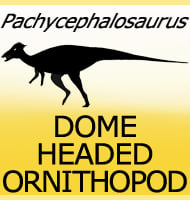In Depth
Like many early discovered pterosaurs the taxonomic history of Cycnorhamphus is quite muddled. Initially assigned to Pterodactylus, the first pterosaur discovered that ended up being treated like a wastebasket for almost any discovered pterosaur remains, Harry Seeley redesignated the specimen Cycnorhamphus. However another palaeontologist, Felix Plieninger, cited mistakes in the description and in 1907 rejected the split from Pterodactylus.
Another specimen would be described in 1974 by Jacques Fabre, but under the name Gallodactylus canjuersensis. Even though similarities with the description of Cycnorhamphus were realised, the new genus went ahead because of the earlier mistakes in naming Cycnorhamphus. Finally in 1996, Christopher Bennet made Gallodactylus a synonym of Cycnorhamphus on the basis that the mistakes in Seeley’s original description could not invalidate the genus.
A 2010 study also by Bennet explained the differences between specimens as age and sex related. The changing morphology of pterosaurs as they grew up caused much confusion in the early years of pterosaur research, and not just for Cycnorhamphus but for many other genera. The revelation of how much pterosaurs changed as they grew would significantly shorten the once exhaustive lists of different pterosaur species when in fact only a handful were valid.
Cycnorhamphus belongs to the family of pterosaurs that are noted for being filter feeders, although Cycnorhamphus does not seem to be as specialised as some others like Pterodaustro. The jaws of Cycnorhamphus are quite short when compared to some other members of the group and they only have teeth at the front, suggesting that Cycnorhamphus may have sifted through sediment for its food.
Possibly to help with pushing its beak through the mud, the overall skull construction of Cycnorhamphus was very robust. Also a small crest approximately two centimetres high rose up from the back of the skull, although this feature was probably only developed in adults, especially males.
Further Reading
– On the taxonomic status of Cycnorhamphus and Gallodactylus (Pterosauria: Pterodactyloidea). – Journal of Paleontology. 70 (2): 335–338. – Bennett, S. Christopher – 1996. – The morphology and taxonomy of the pterosaur Cycnorhamphus. – Neues Jahrbuch f�r Geologie und Pal�ontologie – Abhandlungen. 267: 23–41. – S. C. Bennett – 2013.









